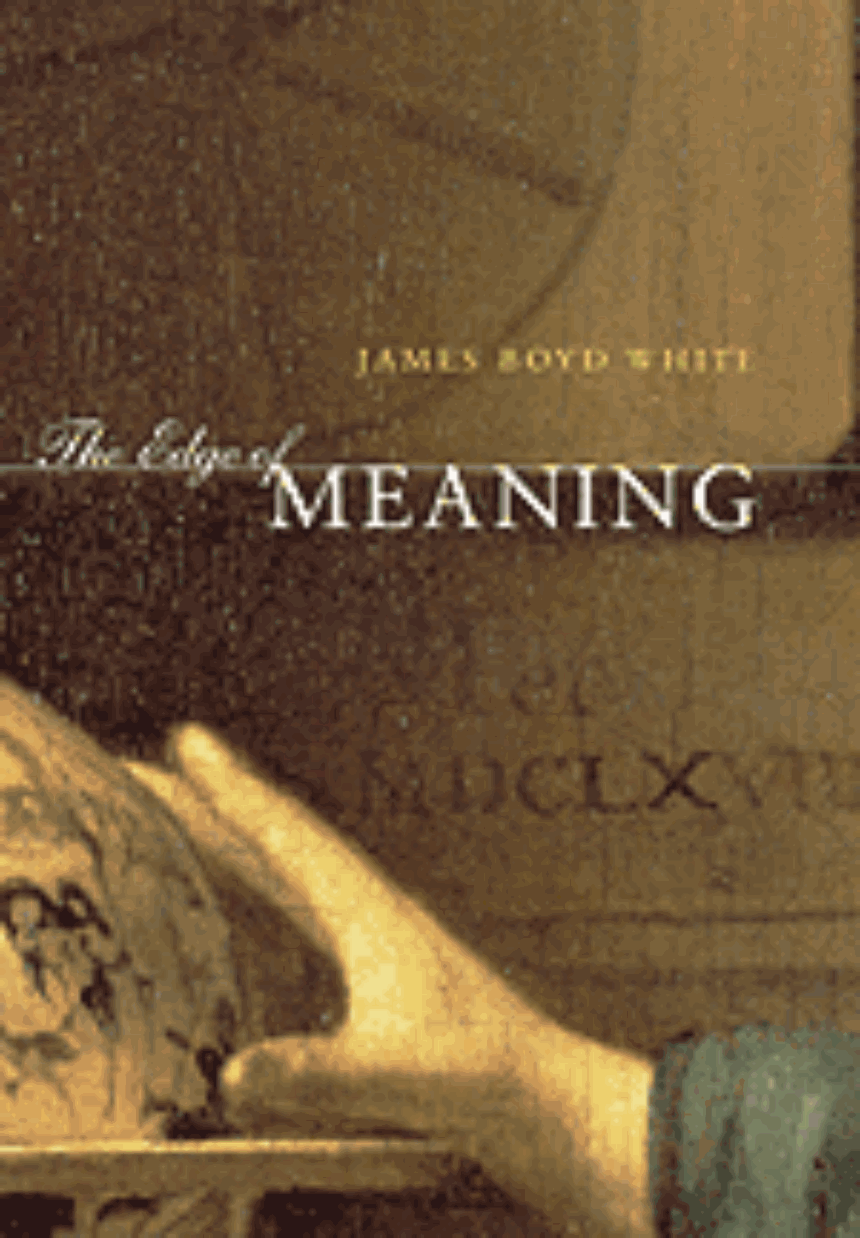The Edge of Meaning
Certain questions are basic to the human condition: how we imagine the world, and ourselves and others within it; how we confront the constraints of language and the limits of our own minds; and how we use imagination to give meaning to past experiences and to shape future ones. These are the questions James Boyd White addresses in The Edge of Meaning, exploring each through its application to great works of Western culture—Huckleberry Finn, the Odyssey, and the paintings of Vermeer among them. In doing so, White creates a deeply moving and insightful book and presents an inspiring conception of mind, language, and the essence of living.
296 pages | 10 halftones | 6 x 9 | © 2001
Law and Legal Studies: General Legal Studies
Literature and Literary Criticism: General Criticism and Critical Theory
Table of Contents
Preface
Introduction: Beyond Words
Part I
1. Thoreau’s Walden: Sporting with Proud Reliance in the Fields of Air
2. Huckleberry Finn: Doing Whichever Come Handiest at the Time
3. The Odyssey: Living in a Land Transformed
Part II
4. Reading Greek: Autar ho ek limenos
5. Making Meaning in the Sentence
6. The Phaedrus: Philosophy, Rhetoric, and Love
Part III
7. Frost and Herbert: Poetry as Life
8. The Life of the Law as a Life of Writing
9. The Depth of Meaning in Vermeer
Acknowledgments
Index
Introduction: Beyond Words
Part I
1. Thoreau’s Walden: Sporting with Proud Reliance in the Fields of Air
2. Huckleberry Finn: Doing Whichever Come Handiest at the Time
3. The Odyssey: Living in a Land Transformed
Part II
4. Reading Greek: Autar ho ek limenos
5. Making Meaning in the Sentence
6. The Phaedrus: Philosophy, Rhetoric, and Love
Part III
7. Frost and Herbert: Poetry as Life
8. The Life of the Law as a Life of Writing
9. The Depth of Meaning in Vermeer
Acknowledgments
Index
